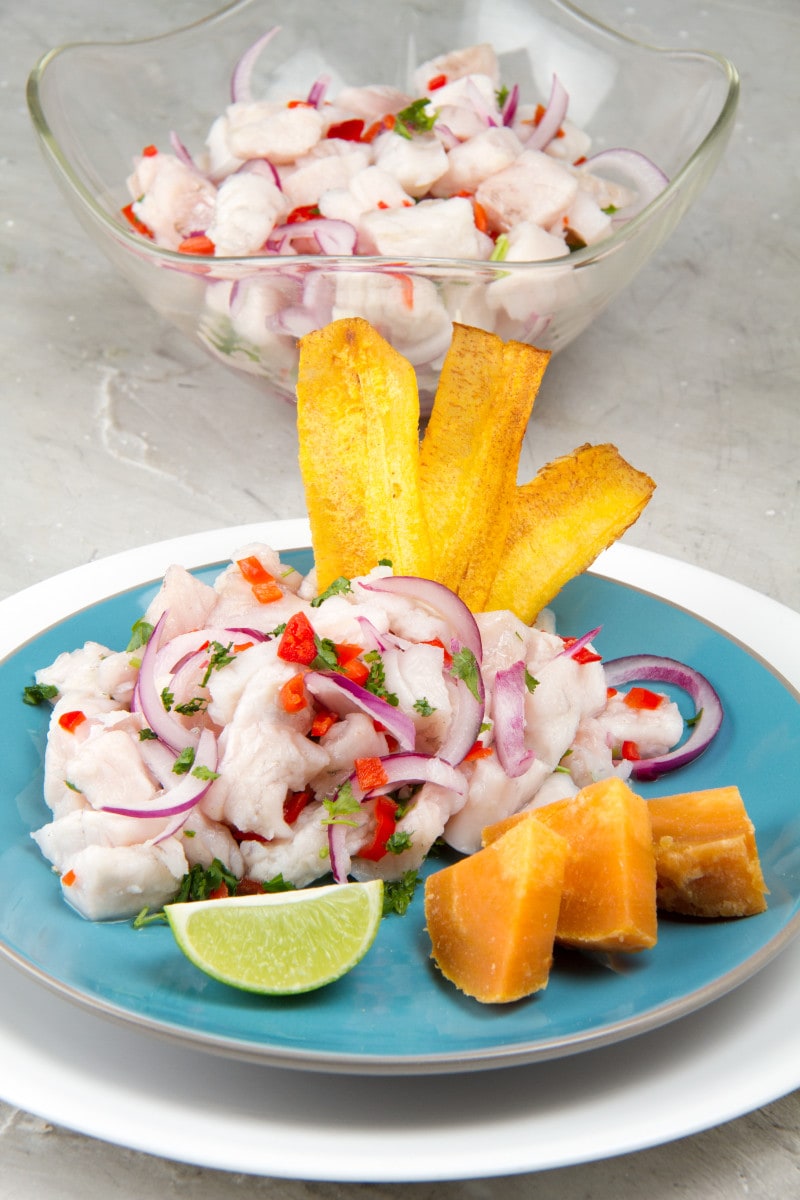
Ceviche Peruano is a citrus-infused raw seafood dish popularised in Peru but found in many coastal areas of Latin America. The appetizer or main course consists of super fresh fish marinated in fresh lime juice and served with thinly sliced red onion and sweet potato.
The freshest ingredients make all the difference in this fish ceviche classic. Learn how to make Peruvian ceviche and enjoy the most famous dish of South American’s most exciting culinary destination.
“Cooking” Ceviche
The normal process of cooking food by heating it involves denaturing, which refers to the changing of the structure of the proteins in the food. Another way of denaturing a protein is to apply citric acid. Citrus juice acid essentially denatures the raw fish or any raw seafood.
This is one of Peru’s signature dishes and a must-try for anyone interested in the local Peruvian cuisine. And don’t miss ceviche in the city of Lima, one of the best places in the world to eat this classic fish dish.
We’re using Mahi Mahi fish and lemon juice mixed with the typical lime juice, the magic ingredient that cooks the delicate fish.
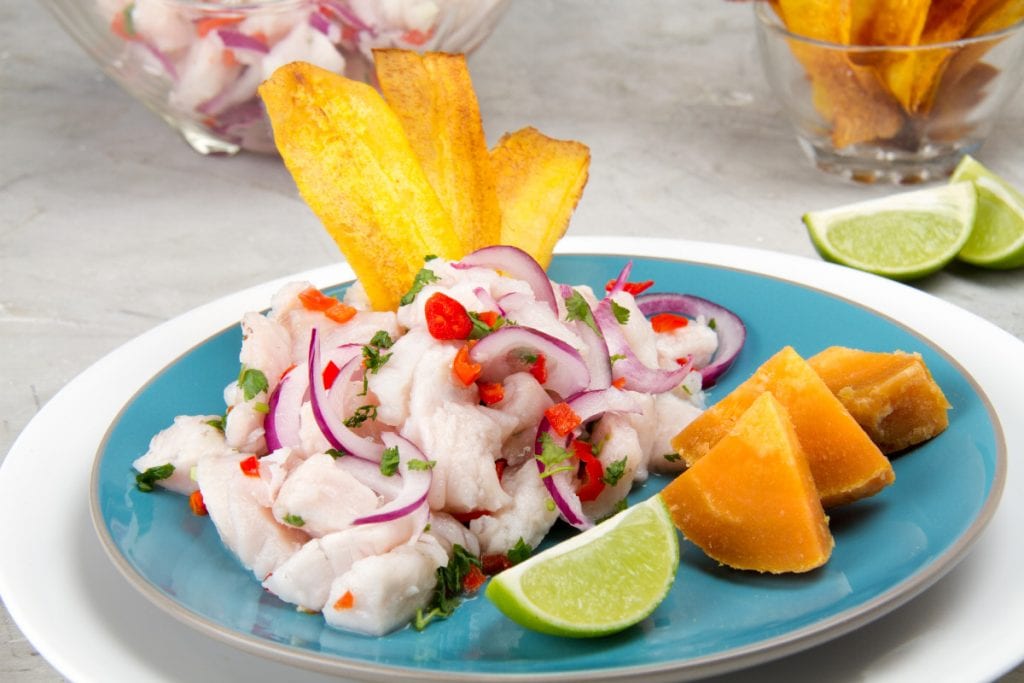
Ají or chili peppers are added to boost flavor. White fish like sea bass, tilapia, and halibut are the best fish for absorbing the citrus juices but other types of fish can be considered. There’s even an octopus ceviche which is delicious. This dish is popular throughout South America (particularly Chile, Colombia, and Ecuador) but there’s evidence to show that it originated in Peru. Try the real thing!
Experiment with different ways of presenting and consuming the dish. The best way to present the finished dish is to drain the excess juice (called leche de tigre), put the fish, and onions in another glass bowl, and then add the spicy, creamy, leche de tigre back.
Ceviche – The Essential Peruvian Fish Dish
Ingredients
For the Ceviche
- 1 kg white fish fillet Mahi-Mahi
- 1/2 kg lemon
- 1/2 kg lime
- 1 small purple onion
- 3 medium peppers habanero red peppers
- 1/2 cup fresh coriander
- 1 teaspoon ginger grated
- Salt to taste
For accompaniment (optional)
- 2 medium sweet potatoes
- 1 cup yellow corn
- plantain chips
Instructions
- Wash and dry the fish. Cut the fish into cubes of approximately 2 cm. Remove any remaining skin, scales or spines. It is important that you only have cubes of lean meat similar in size. Put the fish to the side.
- Wash the lemons and limes. Squeeze them into a large bowl. Strain the fresh lime juice and lemon juice to remove any seeds.
- This lime juice will serve to cook the fish by the marination process. Put the fish cubes into the juice marinade. Make sure that all the flesh is covered by the juice. Cover the container and store in the fridge for about 20 to 30 minutes. Use some ice cubes to cool the fish faster. From time to time check that the fish is “cooking” and turn gently so that each piece gets plenty of contact with the lime juice.
- While the fish cooks, prepare the garnish. Wash the sweet potatoes with a brush and place in a steamer for about 30 minutes, until they are tender. When the potatoes are soft, remove from the steamer, remove the skin and cut into large pieces.
- Peel the plantain and cut in half, crosswise. With the help of a potato peeler cut the plantain into very thin slices. Place the slices or chips in a pan with enough oil to deep fry them. Make sure they don’t touch. With a wooden pallet, stir from time to time. Carefully remove the plantain from the oil and place them on a plate covered with absorbent paper.
- Wash the red peppers and onion. Open the peppers, remove the seeds and veins and cut into small squares. Peel the onion and cut it into thin strips. Finely cut the coriander.
- Remove the ceviche from the refrigerator – the meat should already look cooked (the flesh should be opaque and about to fall apart). Add onion, chili and coriander, ginger, a pinch of salt and stir. Cover the ceviche again and leave it in the fridge for about 10 more minutes.
- Remove the ceviche from the refrigerator and place in cups or small plates. Serve with the plantain chips, and sweet potatoes. Sprinkle with some coriander and ají limo chili pepper.
Notes
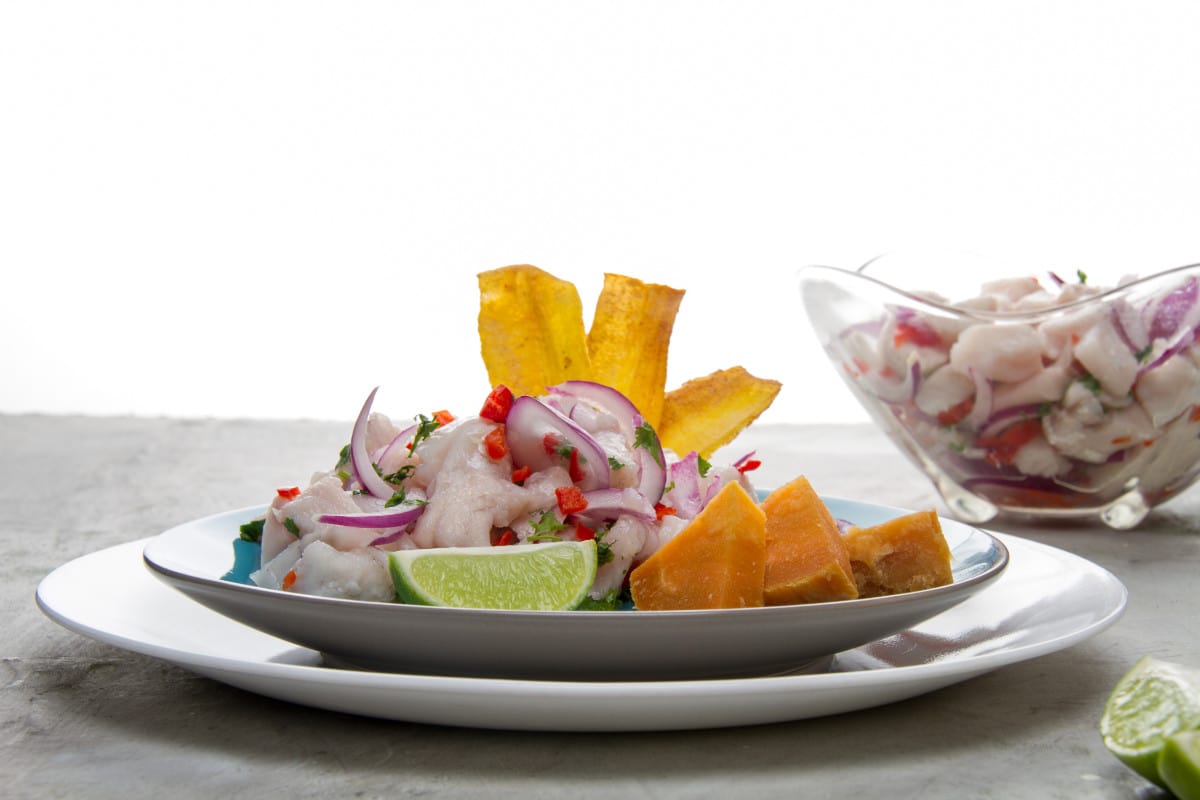
Nutrition
Check out our Tilapia Ceviche recipe for an alternative to the classic Peruvian ceviche.
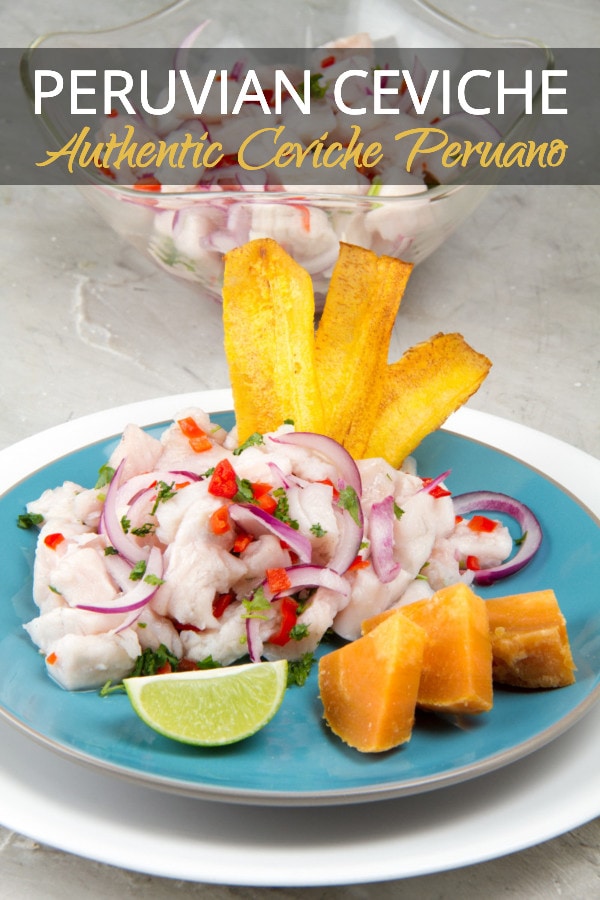

Peruvian foodie. I’ve been writing about the food of Peru for over 10 years. Read more about the Eat Peru team here

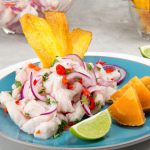
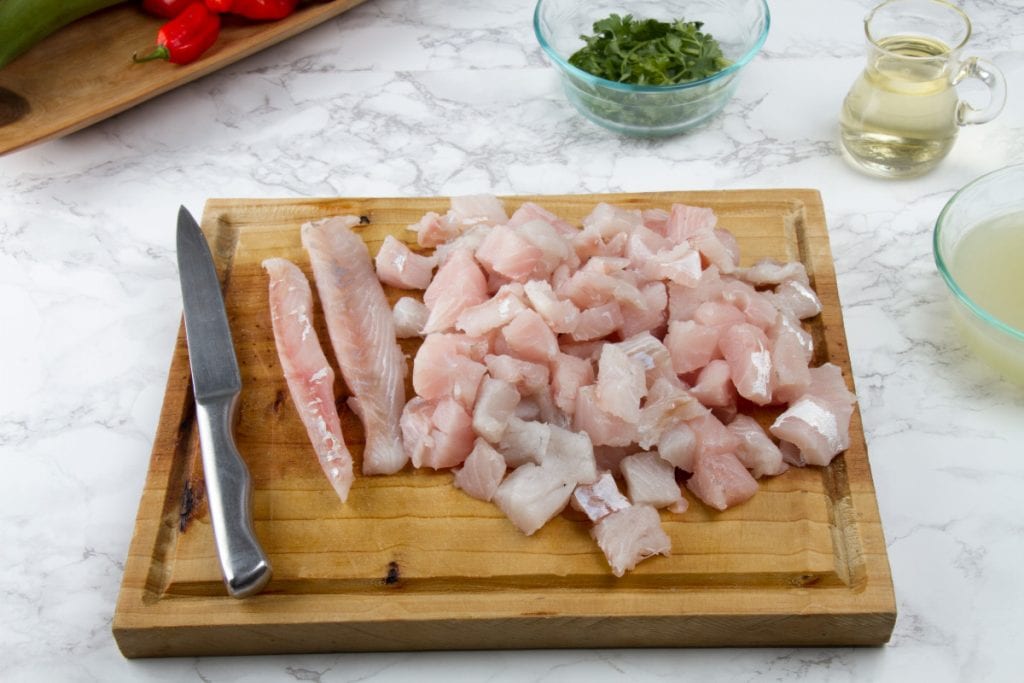
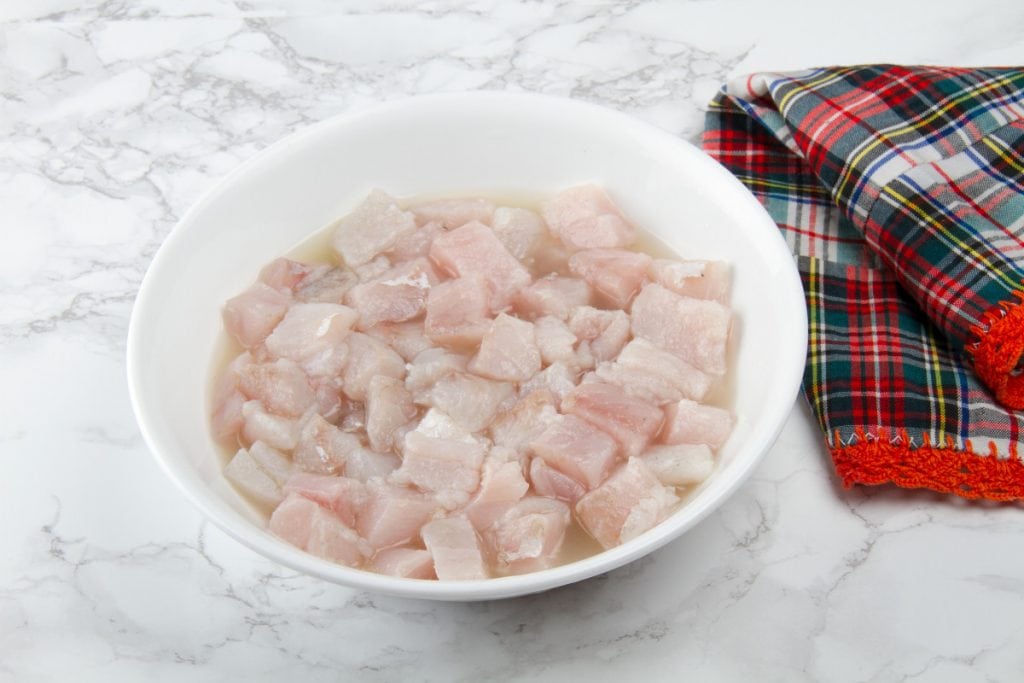
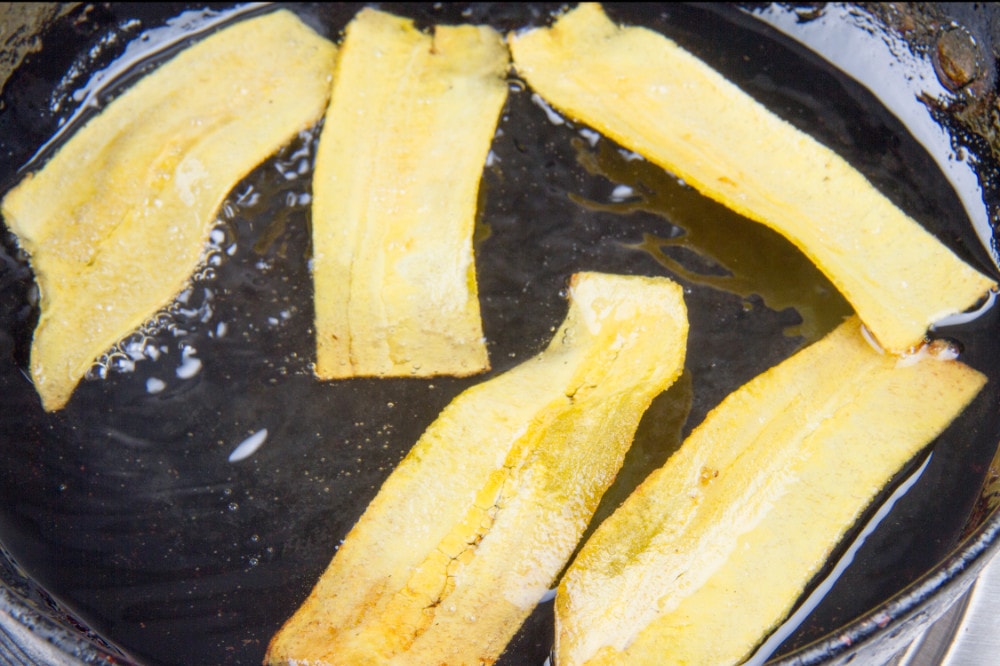
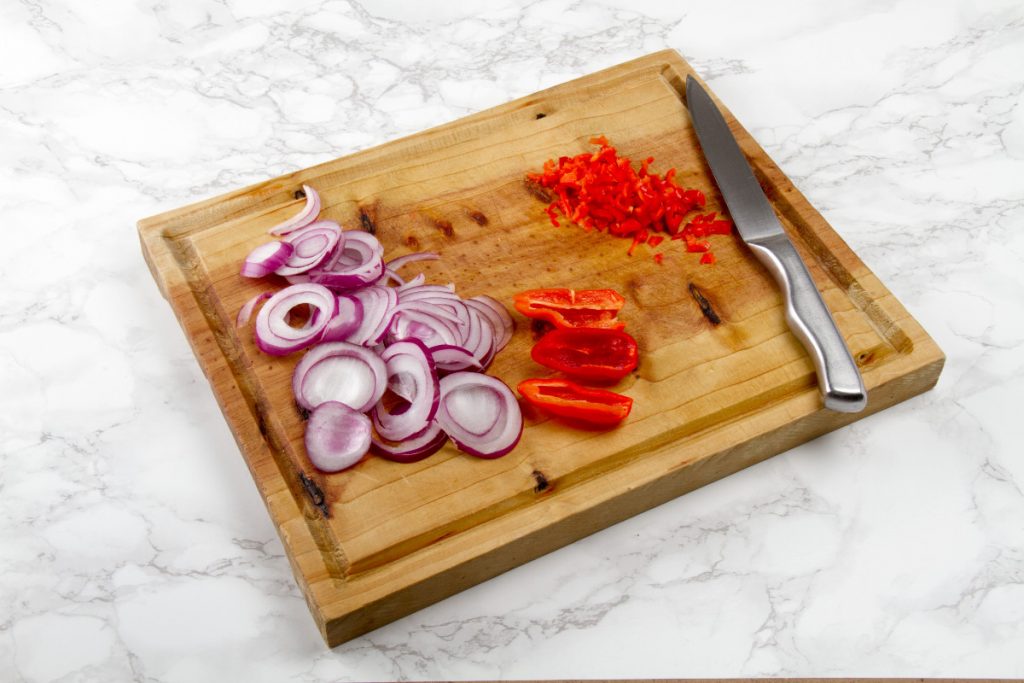
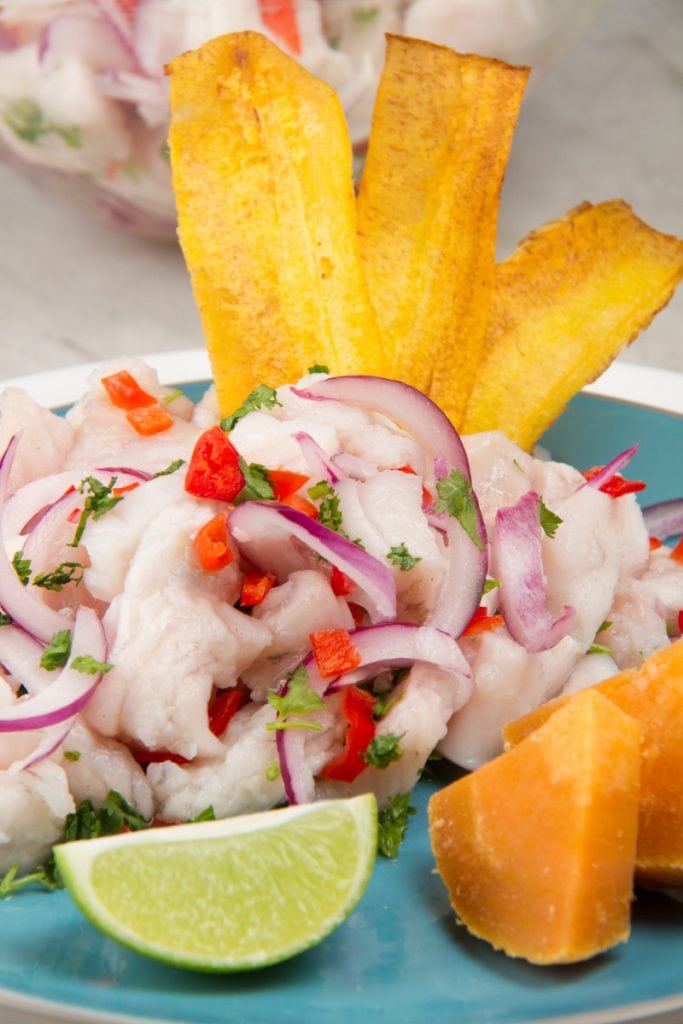
Marissa
How long can this keep in the refrigerator/be consumed?
Eat Peru
In theory, you could keep the ceviche refrigerated for a few days as the lime juice will preserve it. But it won’t taste as good as when it’s consumed fresh. The fish will also start to fall apart if left for too long. Ideally, ceviche should be eaten right away. This is a dish to enjoy fresh.
Cecilia
Actually it’s generally thought to be better the second day and I have an uncle who swears it best on the third day
Vivian Serbin
We won’t have any left overs. Looking forward to making this for Christmas Eve dinner. My Mom always used ají amarillo peppers aka California peppers. Hope l can find them here in Texas.
Franz
I live in Miami and eat ceviche a couple of times a week. Either I make it myself or go to 500 or so Peruvian restaurants in the 305. The ice in this recipe is needed because the lime needs to be diluted. Ceviche last for my taste 1-2 hours MAX!!!
Steve Macc
Stupid question for US Measurement conversion. I’m fine on the weights for the mass (fish, produce, etc.). However, trying to figure out the conversion of the lemon and lime juice. Your (super yummy sounding) recipe says 1/2 kg lemon and 1/2 kg lime. If I try to convert that to cups or oz or ml, it seems like such a way too high volume (think was getting around 2 cups of each – which would be 4 cups in total – which would think would end up drowning the fish!)
For 2 lbs of fish, I have used around 1/2 cup of lemon and 1/2 cup of lime juice in the past with other ceviches I’ve made.
Any thoughts / help would be greatly appreciated!
Scott
The Kg weight of limes and lemons is the weight of the fruit. About 1/2 lb or lemons and 1/2 lb of limes will give you about 1 cup or so of juice.
Chef jesse
You are measuring liquid not the fruit itself. You have to take the original Amount which is a measured liquid not weighed.. they are two completely different ways of measuring. When you convert grams or KG you need to convert it into a measured amount. A KG of water ends up being different when you put it on a scale as to put it in a measuring cup. Weigh a cup of water if the original recipe. Put it in a measuring cup and you will get the exact conversation. Or you can google it and you will get your answer faster
David Spence
The freshest ceviche I ever had was marinated for only a minute or so. I was about 10 years old, living in Talara, Peru. A friend and I paid a fisherman a few soles to take us out on his fishing boat with his crew. We sailed a few kilometers offshore and anchored. The men let down long lines, with baited hooks on them about every 3 feet. After a while they hauled in the lines and threw the fish into a bin. When it was lunchtime, one of the men cut up a fish into small chunks, squeezed lime juice onto it, chopped in some onion and Ají pepper, put on some salt, and it was done.
(Ají peppers are very small red peppers, very hot.)
Jazmin Haney
Very easy and delicious recipe.
ashok
Thanks For Sharing this amazing recipe. My family loved it. I will be sharing this recipe with my friends. Hope the will like it.
Veronica
I’m from Peru living in California. Our Peruvian Ceviche has to be eaten right away after mixing all the ingredients. You can’t let the fish sit in the lime juice (don’t ever use lemon) for too long since the acid will cook the fish and this will lose its firm texture.
Julio
The freshest Ceviche should be eaten immediately. Also, if you go to the Spanish grocery stores find Aji Amarillo or go to Amazon to buy. This yellow hot spice gives a unique flavor to Ceviche. Also, add a little finely chopped cilantro at the end. The fresher the fish, the better the dish. Peru, especially in Lima, has an amazing selection of fish & usually caught off the coast the same day. In addition, Key Limes add more flavor too. I wouldn’t use Tilipia fish unless it’s not farm raised. Too much bacteria in the way they are raised in very crowded areas. Unfortunately, it’s difficult to find very fresh fish in the U.S. unless you live by the coast or do your own fishing. For those that have previously eaten Peruvian Food & may have liked their famous “green sauce” (black mint found in Peru) can also be found on Amazon & Spanish stores.